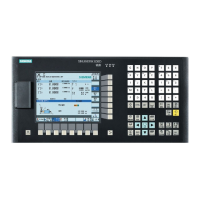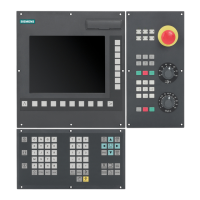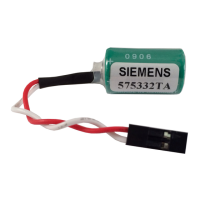Function Manual
72 01/2017
Programming of auxiliary functions
General structure of an auxiliary function
Letter[address extension]=Value
The letters which can be used for auxiliary functions are:
The address extension must be an integer. The square brackets can be omitted when an address extension is specified
directly as a numeric value.
The value is defined differently for the individual auxiliary functions:
● INT= integer
● REAL= fractional decimal number (floating point)
The table below introduces the programming of auxiliary functions:
Address extension
(integer)
M Spindle no. 1 - 2 0-99 INT Function Specific numbers are
assigned a fixed func-
5
S Spindle no. 1 - 2 0-±3.4028 ex 38 REAL Spindle
1
H Any 0 - 99 ±3.4028 ex 38 REAL Any Functions have no
effect in the NCK; only
to be implemented on
3
D - - 0-9 INT Tool offset
selection
D0 deselection, default
D1
1
A maximum total of 10 auxiliary functions may be programmed in one block. Alarm 14770 "Auxiliary function incorrectly
programmed" is output when the specified length for address extension of value is exceeded or when the wrong data type is
used. The following table shows some programming examples for H functions.
If the admissible number of auxiliary functions per block is exceeded, alarm 12010 is issued.
For the programming examples of H functions, see the table below:
Output of H function to the PLC
A new auxiliary function output from the NCK to the PLC is only possible after the PLC has acknowledged all transferred
auxiliary functions. Auxiliary functions are present in the user interface for at least one PLC cycle. A block is considered as
completed when the programmed movement has been completed and the auxiliary function has been acknowledged. To do
so, the NCK stops the part program processing if necessary to ensure that no auxiliary functions are lost from the PLC user
program's point of view.
Transfer of values and signals to the PLC interface
Time of transfer
In the case of auxiliary functions which are output at the end of a block (e.g. M2), the output is only made after all axis
movements and the SPOS movement of the spindle have been completed.

